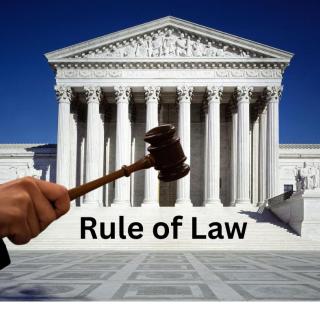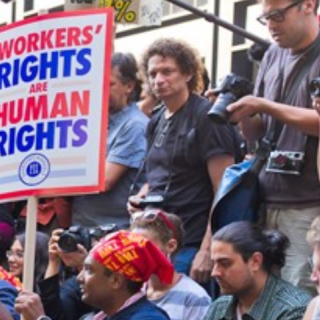Advertisement
Only in Columbus, Ohio, can “ideas [be] considered for Downtown plan” without confronting the physical reality or the history of downtown. That, of course, is the Columbus Way. Historical and physical reality, including concrete, cannot interfere with fantasy or selling and buying.
If I didn’t know better, I would be surprised. But after all, this is Columbus, Ohio, with no identity and no history, no democratic governance, leadership, or urban expertise. I wrote in December 2021 that “Columbus searches for its Downtown with historical, urbanist, and developers’ blinders,” and in January 2022 that “Columbus, Ohio, searches to be a city: The myth of the Columbus Way.”
Columbus, Ohio is also geographically challenged. This is the city that can’t tell the difference between the Short North and Greenwich Village or Near North Side of Chicago, the Convention Center and Times Square; the Scioto Riverfront and Boston Harbor, Lake Michigan, or San Francisco Bay.
Most ludicrously, so-called designers and even a public health specialist fantasize that digging trenches to connect several Metro Parks and waterways will transform the region into either Amsterdam or Venice. Those are world-historical cities, built over centuries, not “regions.” Public health will not be enhanced significantly by a few people kayaking to work or hiking to dinner.
Despite City Hall’s location downtown, City staff, Councilors, Mayor, and private developer promoter Columbus Downtown Development Corporation (CDDC), led by former mayor Michael Coleman, remain ignorant of both downtown Columbus, and past and present urban downtowns across the US and elsewhere. Columbus has no qualified city planners. Development promoters confuse “planning” with list making.
The CDDC promotes an unaesthetic, bird-endangering piece of fabric art between two buildings as transformative. One office building redeveloper fantasizes turning a now-covered bridge way to a parking garage into a Columbus version of New York City’s landmark High Line, which has no connection to any buildings. Ignorant city booster Columbus Dispatch’s Business page prints its press release as a news article.
Now, protected bike and dedicated bus lanes will undergird “A ‘15-minutes Downtown’ where people don’t need a car to go grocery shopping, to pick-up prescriptions or to take your kids to day care. More affordable housing. More minority- and women-owned small businesses including retail.” According to a report in August 1, 2022 Columbus Dispatch, “Those are all ideas being considered in the 2022 Downtown Strategic Plan.” This is an imitative wish list; it is not a plan. What, in fact, is “A ‘15-minutes Downtown’”?
Almost unbelievably, nowhere on this agenda are the physical realities of downtown Columbus, Ohio. Its street system is an unplanned, chaotic mess of competing and conflicting, always shifting one- and two-way streets. Private parking lots that ridiculously do not accept the City’s own parking app occupy far too many street corners. Despite its relatively small size, downtown is hard to navigate. It is difficult to imagine just where bus and lanes would be, or that retail merchants, as on Indianola Avenue, will not oppose them.
No one notes that downtown Columbus has no buildings of architectural or aesthetic distinction. None designed by a noted architect. Not one. Nor that the working population continues to decline. If the City had professional planners, they would very likely forecast limits to continued residential growth without an expansion of employment.
The words of Ann Taylor, president of the CDDC who is “leading the effort” are a muddle of dis- and mis-information and contradictions about Columbus and cities. “The plan is the starting point. What the community wants.” But who is “the community,” how will they speak, and to whom? “But officials will have to sit down with city traffic engineers and others to make it work.” Oh.
The newspaper report gets to the heart of the matter: selling public space to private buyers, in other words, the Columbus Way. “Other ideas include the Columbus Downtown Development Corporation forging a plan that consider [sic] incentives for Downtown retail, emphasizing women- and minority-owned business.” This is not planning; it is sloganeering: “‘The community has talked about incentives,’ Taylor said. Greg Davies, CEO of the Columbus Downtown Development Corporation, said former Mayor Michael B. Coleman wanted residential tax abatements Downtown to spur interest in housing. ‘Maybe it’s time to do that for retail,’ he said.” The community? Maybe?
Other “ideas” ignore not only Downtown’s maze of streets and mélange of buildings but its awkward size and shape overlapping the Short North, Weinland Park, Franklinton, The Hilltop, and more. Nowhere is it clear where or how the imitative “working plan also calls for community and art leaders to pay for a study to create a model for public art and entertainment and support more” alcohol-flowing, drunkenness and robbery promoting Downtown Outdoor Refreshment Areas (DORAs).
Equally without support in basic planning and geographic reality are the “other ideas [that] include pedestrian bridges over the Scioto and Olentangy rivers at and near Confluence Park, and paralleling the railroad trestles north of the National Veterans Memorial and Museum.” “Other ideas”?
As to “affordable,” i.e., women, and minorities: “Downtown should also have a mix of housing so people with a variety of incomes can afford to live there….” Should? That is not a plan. What incentives and to whom will meet this aspiration?
The final fantasy violates all limits on responsible imagination: “Another goal is to boost Downtown’s population to 40,000 by 2040.” The current estimated population is about 11,000. 2040 is only 18 years away….
Josh Lapp, the chair of Transit Columbus, an advocacy group, is much too generous in stating “‘Columbus is really good at making plans, less good at executing them.” In fact, the recent history of the City testifies to its failure at both making and enacting plans.
Downtown will look very much the same in 10-15 years, this urban historian predicts. I base my assumptions on the city’s past and present. But the City, with service to developers from the CDDC and Columbus Partnership, will continue to sell public spaces, services, and projects to private bidders, often not even the highest bidders. That’s the Columbus Way. We have only to look at the city.
News notes
1. After “Mayor” Ginther threw away $20 million indiscriminately offering 100 early retirement bonuses of $200,000 each for an already understaffed Columbus Police Department, City Councilor Emmanuel Remy proposes spending another $1 million on retirement bonuses to senior administrators. Meanwhile, little is done to make the force functional and truly promote public safety in a very unsafe city.
2. Thrive property development companies donate $1 million to RAPID 5 “effort to link trail and waterways” to make Columbus somehow resemble fallaciously either or both Amsterdam or Venice, and public health. Why? Thrive, formerly Wagenbrenner Development, is building more than 1000 apartments, 317 townhouses/flats, and 289 freestanding condos within Quarry Trails Metro Park. Within the park! The Columbus Way has no natural boundaries or environmental priorities. Or if Weinland Park is an example, Thrive joins Downtown is having no aesthetic or design values.
--------------------------------------------------------
Harvey J. Graff is Professor Emeritus of English and History at The Ohio State University and inaugural Ohio Eminent Scholar in Literacy Studies. Author of many books on social history, the history of literacy and education, and interdisciplinarity, he writes about the history and contemporary condition of higher education for Times Higher Education, Inside Higher Education, Academe Blog, Washington Monthly, Publishers Weekly, Against the Current; Columbus Free Press, and newspapers. Searching for Literacy: The Social and Intellectual Origins of Literacy Studies is published by Palgrave Macmillan in August. My Life with Literacy: The Continuing Education of a Historian. The Intersections of the Personal, the Political, the Academic, and Place is forthcoming.



